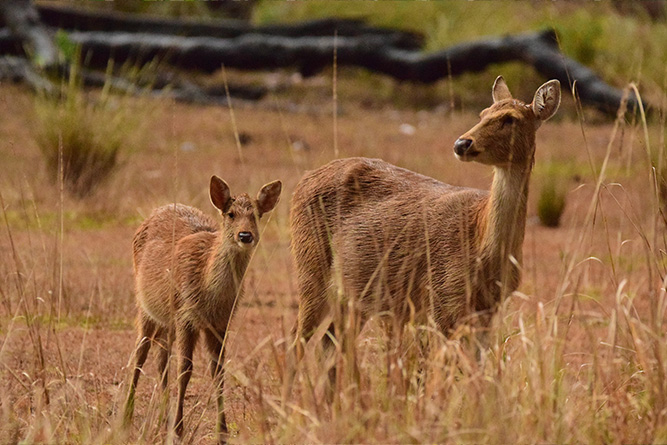The Barasingha, often referred to as the Swamp Deer, is a captivating and unique member of the deer family. This deer species is famous for its impressive antlers and its affinity for marshy habitats. Let's explore the fascinating world of the Barasingha.
Table of Contents
Species Data
- Class: Mammalia
- Order: Artiodactyla
- Family: Cervidae
- Scientific Name: Rucervus duvaucelii
- Life Span: 15 to 20 years
- Height: 120-130 cm (47-51 inches)
- Weight: 170-180 kilograms (375-397 pounds)
Description
The Barasingha is renowned for its magnificent antlers, which can have up to 12 tines, making them one of the most impressive in the deer world. These deer have a light brown coat, and males (bucks) are typically larger than females (does).
Appearance
These deer are characterized by their long legs and impressive antlers. They have a white patch on their throat and a dark dorsal stripe running down their back.
Behavior
Barasingha are primarily diurnal, meaning they are most active during the day. They are social animals and are often seen in herds, grazing in grasslands and swamps.
Habitat
They are well-suited for wetland habitats, including grassy floodplains, swamps, and marshes. Barasingha are excellent swimmers and are often found in areas with abundant water.
Diet and Nutrition
Their diet primarily consists of grasses and aquatic plants. Their unique anatomy, with elongated limbs and a specialized digestive system, allows them to thrive in swampy environments.
Mating Habits
Barasingha typically mate during the monsoon season, with a gestation period of about 240 days. Female Barasingha give birth to a single fawn, which they protect and nurture in the tall grass.
Mating Behavior
- Reproduction Season: Monsoon season
- Pregnancy Duration: Approximately 240 days
- Baby Carrying: Females hide their fawns in tall grass
- Independent Age: Fawns become independent at around 6 months
- Female Name: Doe
- Male Name: Buck
- Baby Name: Fawn
5 Fun Facts for Kids
- The Barasingha's name means “twelve-tined” in Hindi, referring to their impressive antlers.
- They are expert swimmers and are often called “Swamp Deer” due to their habitat preference.
- Barasingha are known for their distinctive vocalizations, including loud, trumpeting calls.
- Their antlers are shed annually and regrow, with the number of tines increasing as they age.
- These deer play a vital role in maintaining the health of their wetland habitats.


